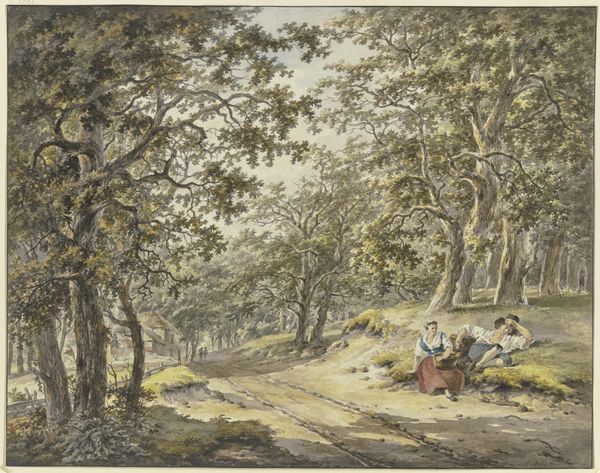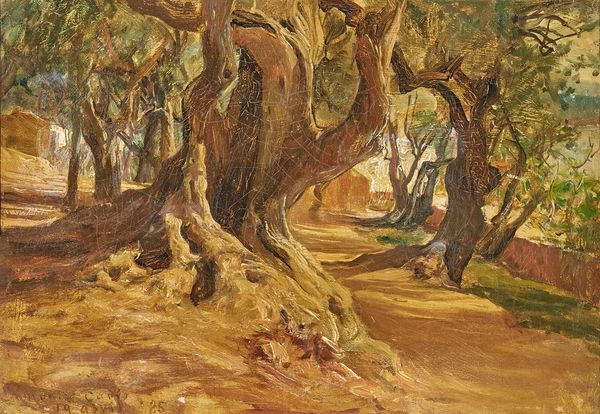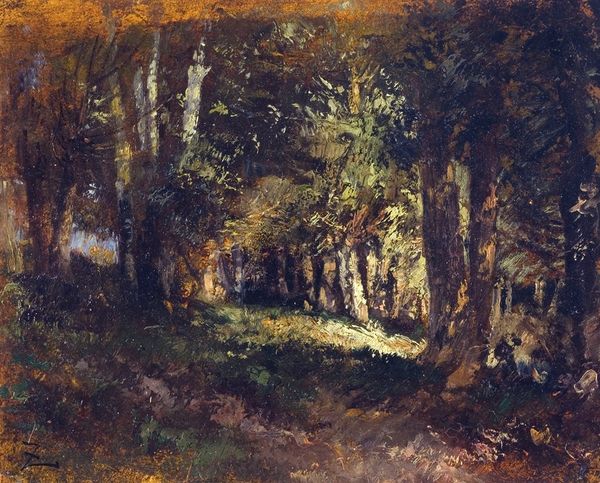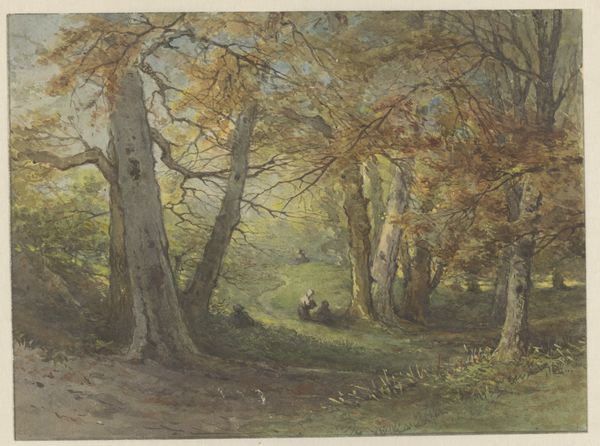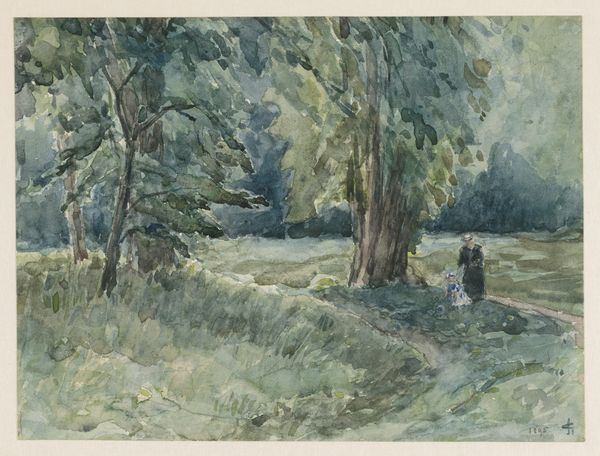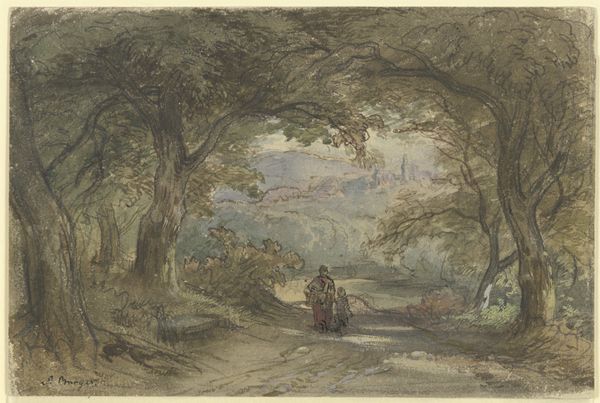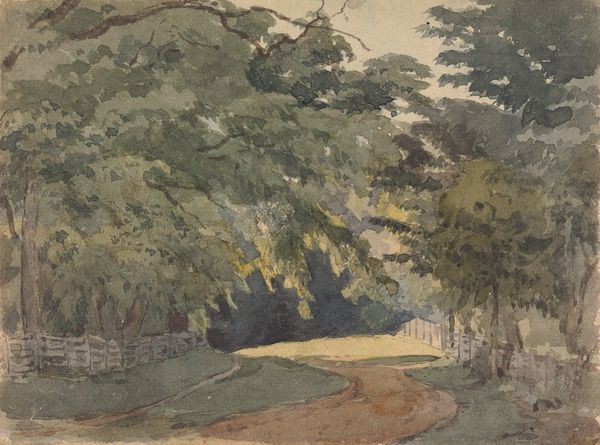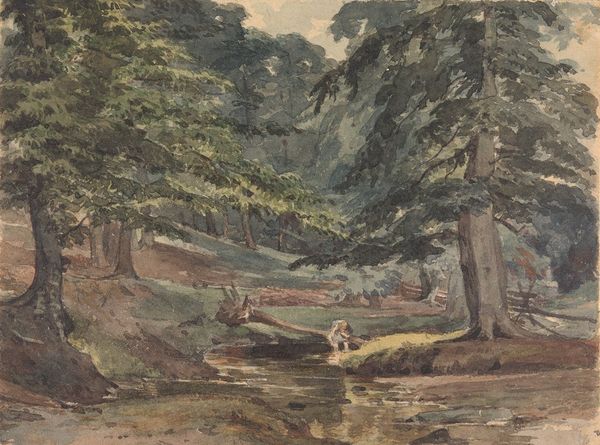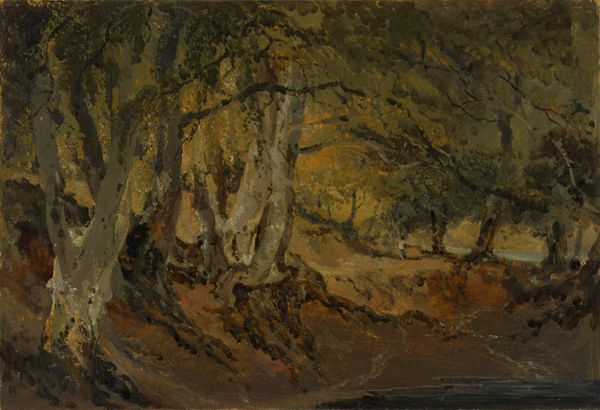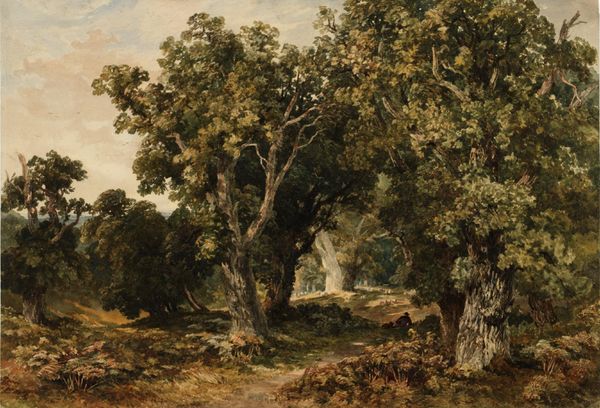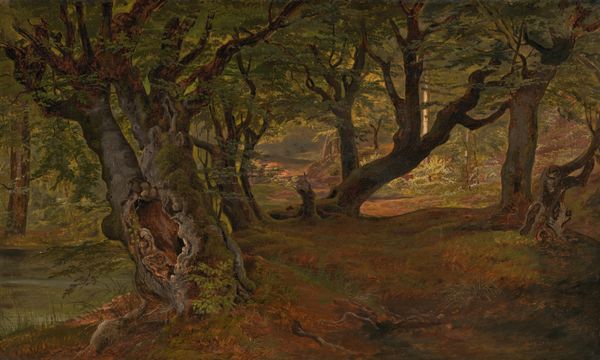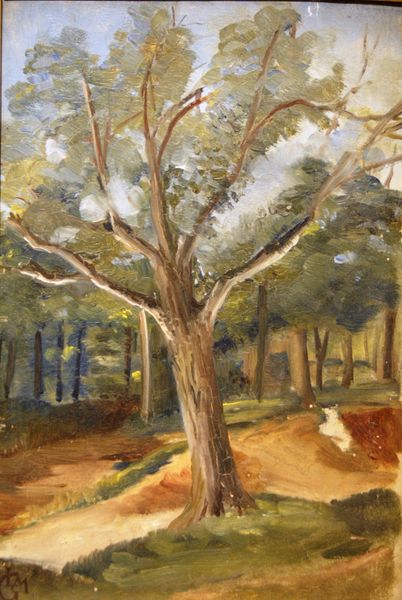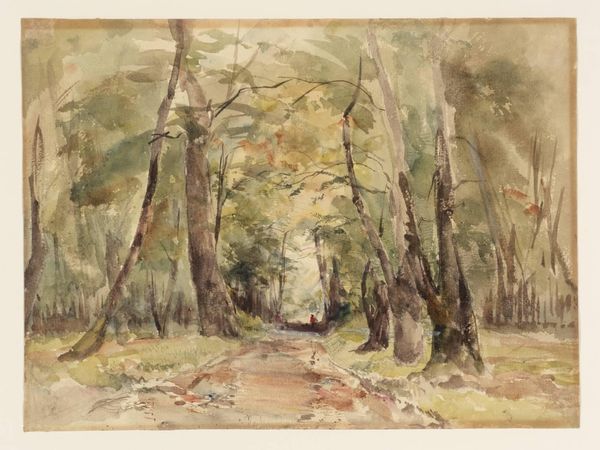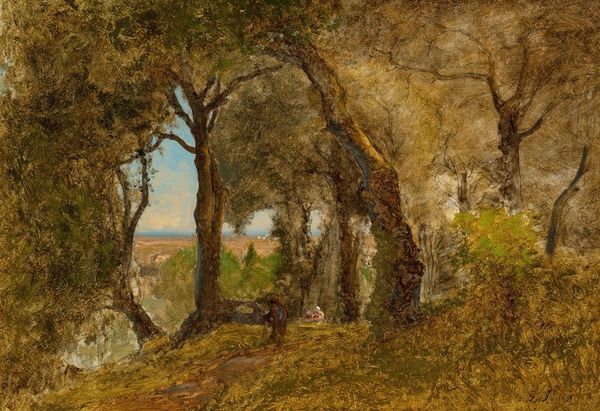
plein-air, watercolor
#
portrait
#
plein-air
#
landscape
#
figuration
#
oil painting
#
watercolor
#
romanticism
#
genre-painting
#
watercolor
Copyright: Public Domain: Artvee
Curator: Look at the light in this watercolor from 1846, "The Gipsy" by Sir John Everett Millais. It evokes a quiet kind of contemplation, wouldn't you agree? Editor: There's an undeniable serenity to it. The muted palette certainly contributes to that feeling, but I’m also struck by how Millais uses the trees as a sort of framing device, drawing the eye to the central figures. Curator: Absolutely. That framing shapes the reading, of course. Consider the Roma figure depicted in this artwork. Millais paints her amidst the increase in prejudiced and unfounded British writing of the period claiming they were vagrants and even cannibals. She stands here, however, almost as an archetype of maternal care within a hostile, alienating environment. Editor: Fascinating how context informs perception. Ignoring those social forces, I would have noted that the artist is very much engaging with texture and form. He seems to revel in capturing the rough bark of the trees juxtaposed with the soft garments. The interplay is quite evocative from a purely material point of view, but the reading of the piece now moves beyond this point of visual analysis into a more significant area of contemporary cultural critique. Curator: Exactly. And what of the fact this appears to have been executed *en plein air*? I feel that it adds a sense of immediacy. Millais invites us into the actual social dynamics of the period, in all its raw humanity. Editor: Interesting point. It begs the question of intentionality, does the formal decision to execute the artwork *en plein air* inform the sociocultural implications you mention or does the decision merely highlight his engagement with the landscape as form, color, and light. To me, this work reveals a powerful visual syntax regardless of the original intention. Curator: I suppose it speaks to the idea of art’s multiplicity, that different aspects resonate across history. It prompts a reflection on how society continues to negotiate identity, displacement, and prejudice even today. Editor: Well said. Looking closely has certainly unveiled different dimensions within what I initially perceived as a simple romantic scene.
Comments
No comments
Be the first to comment and join the conversation on the ultimate creative platform.
